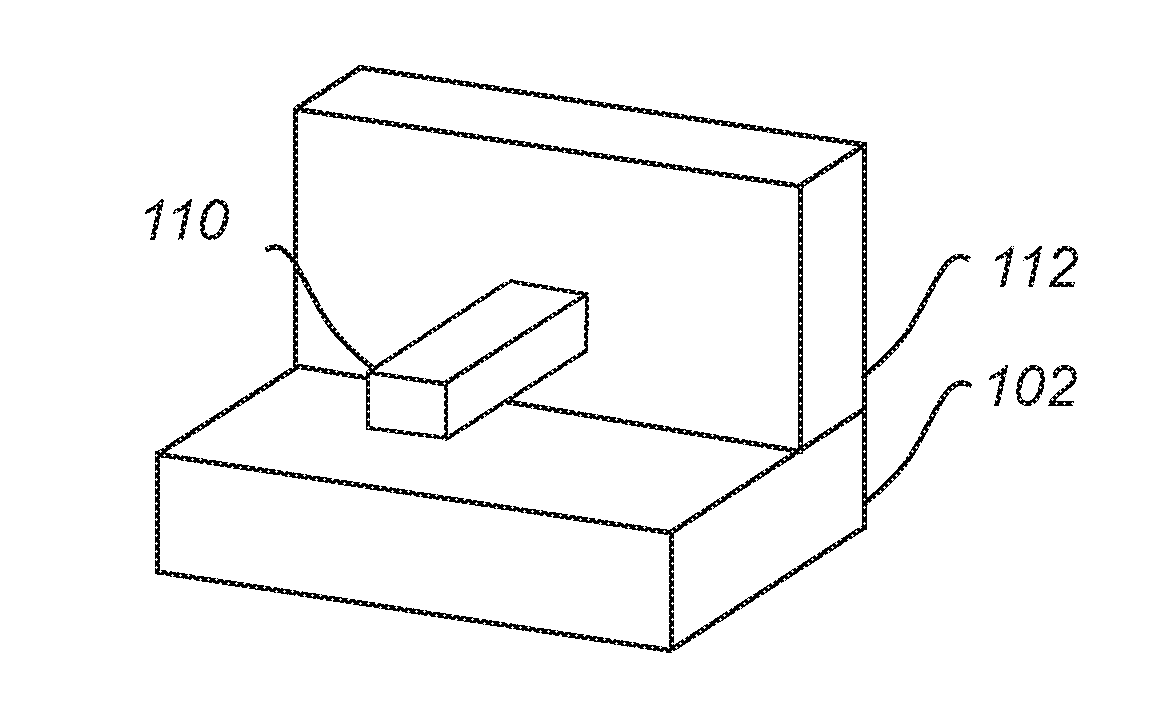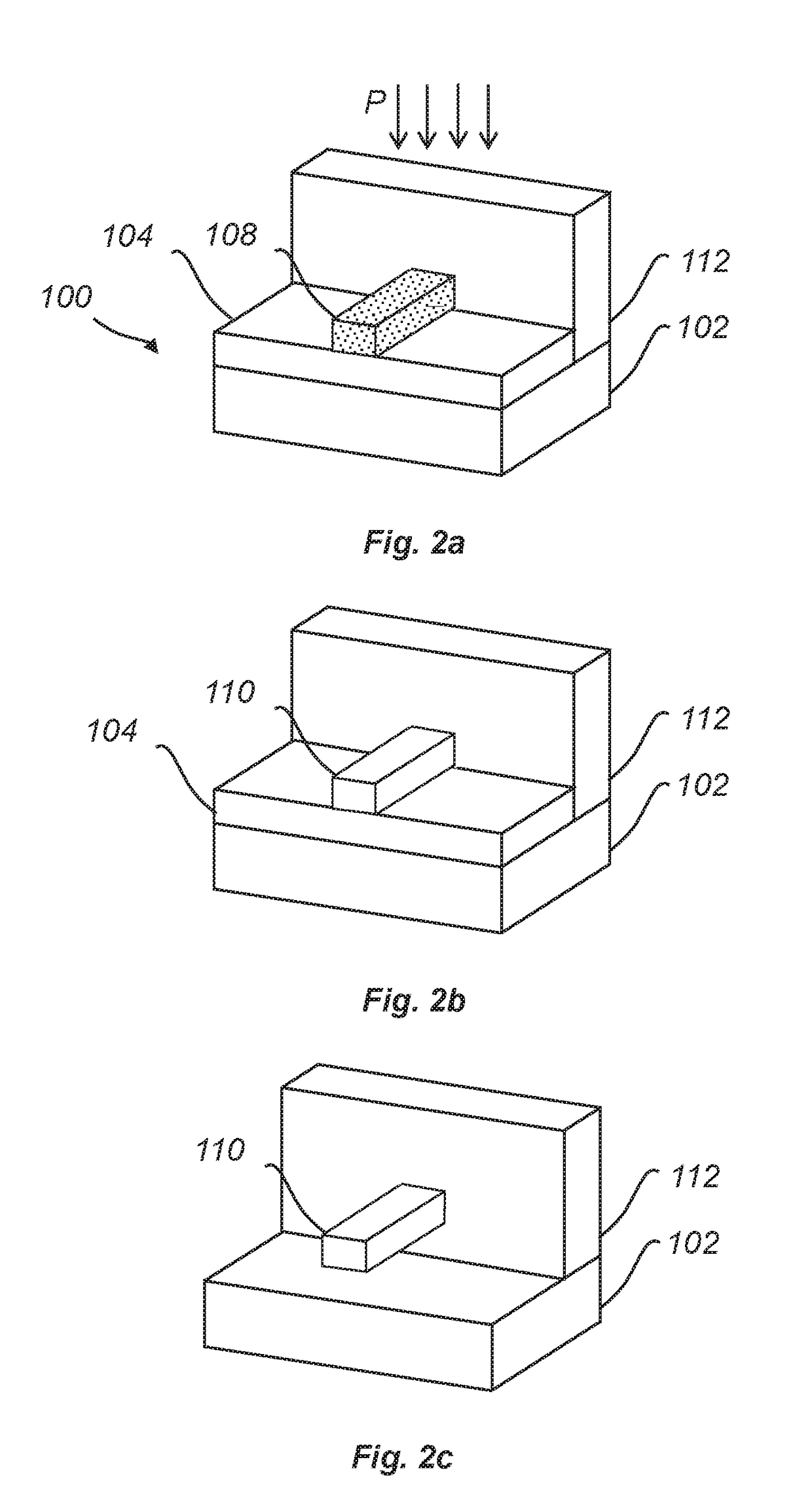Method of Forming a Feature of a Target Material on a Substrate
- Summary
- Abstract
- Description
- Claims
- Application Information
AI Technical Summary
Benefits of technology
Problems solved by technology
Method used
Image
Examples
Embodiment Construction
[0073]FIGS. 1a-c schematically illustrates a method of forming a feature 110 of a target material on a substrate 100.
[0074]FIG. 1a illustrates a stack of layers which in a bottom-up direction include a substrate layer 102, a buffer layer 104 and a sacrificial material layer 106. The substrate layer 102 and the buffer layer 104 form the substrate 100 on which the feature 110 will be formed, in accordance with the following.
[0075]It may be noted that FIG. 1a only shows a portion of the substrate 100 and that the substrate 100 may extend horizontally / laterally beyond the portion shown in FIG. 1a.
[0076]According to the method, the sacrificial material layer 106 can be patterned to form a feature of the sacrificial material 108 which is shown in FIG. 1b. The feature 108 may be formed by patterning the sacrificial material layer 106 using a lithography and etching process. The feature 108 may also be directly formed on the substrate 100 using an atomic layer deposition (ALD) process.
[007...
PUM
 Login to View More
Login to View More Abstract
Description
Claims
Application Information
 Login to View More
Login to View More - R&D
- Intellectual Property
- Life Sciences
- Materials
- Tech Scout
- Unparalleled Data Quality
- Higher Quality Content
- 60% Fewer Hallucinations
Browse by: Latest US Patents, China's latest patents, Technical Efficacy Thesaurus, Application Domain, Technology Topic, Popular Technical Reports.
© 2025 PatSnap. All rights reserved.Legal|Privacy policy|Modern Slavery Act Transparency Statement|Sitemap|About US| Contact US: help@patsnap.com



